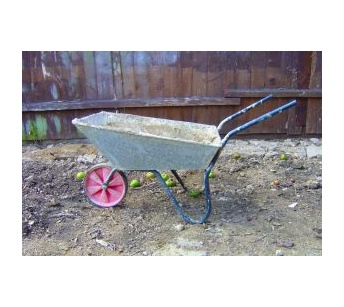 If you are gardening the same old way you always have, you might want to think about this a bit. New strategies, techniques and planning may work better in our current economic reality.
If you are gardening the same old way you always have, you might want to think about this a bit. New strategies, techniques and planning may work better in our current economic reality.
I’ve already shared with you some ideas for gardening in a bad economy. If you missed that post, click here: How to Garden in a Bad Economy. Now, let’s talk a little more about this.
One of the trends that seems to be changing in gardening in the response to the economy is the planting of more perennials. Better Homes & Gardens mentioned this summer that there has been a large increase in the number of perennials and a decrease in the number of annuals that are being planted. People may want to spend less money or time on plantings that will will put on a great show but will need to be replaced at the end of the season. Hardy, native perennial flowers, plants, shrubs and trees will require very little maintenance and water. You’ll spend less in the long run, and it is very green.
Going back to the idea of growing your own food, you can reduce your lawn or convert a lawn into a vegetable garden. Not only will you gain the produce to consume, but you will spend less on lawn maintenance. There is no lawn service to pay or gas-powered lawn mowers to feed.
Going less fancy in your garden and more back to basics will also save you money. Getting creative to create your own soaker hose instead of purchasing a fancy irrigation system, for example is a smart idea when finances may be tight.
Join a plant or seed exchange. These groups have become especially popular in our current economy. People from all over (you can choose a local, a national or even a worldwide group) exchange seeds, seedlings and plants. Growing co-ops are also popular. In a growing co-op, members plant one or two crops in their garden and then exchange the resulting produce. Working in any sort of partnership is a great way to garden in a bad economy.
Mary Ann Romans writes about everything related to saving money in the Frugal Blog, creating a home in the Home Blog and caring for little ones in the Baby Blog. You can read more of her articles by clicking here.
Related Articles
Fall Planting “How To” on You Tube
How to Garden in a Bad Economy
Using Fall Leaves as Winter Mulch

